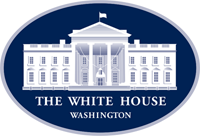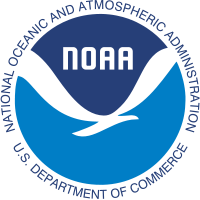
U.S. Department of Energy

Department of Energy Actions on BP Oil Spill
The National Laboratories were convened by the Department of Energy and tasked to begin looking at ways to plug the leak in the Gulf the week of April 26th.
At the direction of the President, Secretary Chu assembled a scientific team of top scientists and has made three trips to Houston, monitoring the progress of BP's effort to contain the leak and helping to design the strategies for moving forward. The team includes:
- Dr. Tom Hunter, Director of the Department of Energy's Sandia National Laboratories
- Dr. George A. Cooper, an expert in materials science and retired professor from UC Berkeley
- Richard Lawrence Garwin, a physicist and IBM Fellow Emeritus
- Dr. Alexander H. Slocum, professor of mechanical engineering at MIT
Secretary Chu is on the phone with his science team a minimum of 1-2 times a day, 7 days a week, and the calls frequently last 90 minutes or more. Secretary Chu and members of his team also have a dialogue with BP executives each morning.
In addition, the Department of Energy, along with NASA and other scientific agencies, has between 6 and 8 scientists on the ground in Houston, and more than 200 scientists, engineers and other experts from the National Laboratories have been actively supporting the efforts to respond to the spill.
Key Dates:
- Starting on April 21 - the morning after the explosion and days before there were solid indications that the well was leaking - the Department of Energy was in contact with current and former oil industry contacts to assess what happened and what went wrong, as well as to determine the configuration of the BOP.
- On April 29th, the Department of Energy convened the national laboratories to solicit ideas within 24 hours on capabilities for mitigation, environmental remediation and other response efforts.
- On Friday, April 30th, Secretary Chu directed the Sandia, Los Alamos and Lawrence Livermore National Laboratories to send scientists to Houston to assist in the response efforts. The team arrived the next day -- Saturday, May 1. The early focus of this team included developing crucial pressure measurements and radiographic imaging of the blowout preventer.
- On May 3, following a meeting with BP CEO Tony Hayward, Secretary Chu directed additional and highly talented laboratory staff to be dispatched to Houston, including Dr. Tom Hunter, Director of Sandia National Laboratories.
- On May 10th, at the request of President Obama, Secretary Chu assembled a team of top scientists from the National Laboratories as well as leading universities. Secretary Chu and members of this team have made three trips to Houston, monitoring the progress of BP's effort to contain the leak and helping to design the strategies for moving forward. Secretary Chu is on the phone with his science team a minimum of 1-2 times a day, 7 days a week, and the calls frequently last 90 minutes or more. Secretary Chu and members of his team also have a dialogue with BP executives each morning.
- On May 12th Secretary Salazar and Secretary Chu conducted a site visit of Cameron Facility, the company that manufactured the blowout preventer stack for the Deepwater Horizon. They also visited a competing manufacturer, National Oilwell Varco.
- From May 24 to May 28, Secretary Chu and members of his science team were in Houston at the BP command center monitoring the "top kill" attempts. The team conducted flow and resistance calculations, evaluated pressure data in real time and provided independent analysis of the results of the effort.
- From June 2 to June 4, Secretary Chu was in Houston to provide assistance as BP placed a top hat on top of the BOP and began collecting oil at the surface. While he was there the Secretary also received a detailed briefing from BP officials about the plans for drilling the relief well that will ultimately kill the well.
- On June 8, the Department launched a website - energy.gov/oilspilldata - to provide online access to schematics, pressure tests, diagnostic results and other data about the malfunctioning blowout preventer. Secretary Chu insisted on making the data widely available to ensure the public is as informed as possible, and to ensure that outside experts making recommendations have access to the same information that BP and the government have.
- On June 15, based on updated information and scientific assessments, Secretaries Chu and Salazar joined U.S. Geological Survey Director Marcia McNutt to release an improved estimate of how much oil is flowing from the leaking well - between 35,000 and 60,000 barrels per day. Secretary Chu stressed that the upper number is less certain, and numbers can change as we continue to refine the estimate.
- On June 15th, Secretary Salazar and Secretary Chu convened a meeting with oil industry executives to review BP's updated containment plans and identify additional resources that could be brought to bear to build upon what is already the largest cleanup effort in the nation's history. While the companies have already offered and provided expertise and resources, the meeting was an opportunity to update those efforts based on the expanded and accelerated containment plan that the government recently directed BP to develop. White House staff also attended the meeting.
Key Contributions of Secretary Chu's Scientific Team:
- Secretary Chu and his team of scientists have urged BP to use the choke and kill lines to collect oil from the BOP. These lines are designed to pump mud into the BOP and are not used to produce oil under normal circumstances. BP had discounted that option initially but were pushed by the team to look at it again, and decided after the choke/kill attempt that it would work. Since only one ship can be connected to the riser that is connected to the top hat, BP has connected the choke line to another ship on site. That line is now available, allowing another 5,000 - 10,000 BPD to be produced in addition to the 18,000 BPD that can be collected by the Enterprise from the top hat.
- The team insisted that BP bring in additional ships, so they will have the capacity to collect more oil from the BOP, and has examined the configurations of lines BP is using to optimize the amount of oil that can be collected. For example, a ship currently leased by Chevron is being prepared to join the collection effort.
- Our science team has designed a new more permanent cap with BP that can replace the top hat and allow a permanent production riser to be attached to the BOP. This could have a capacity to collect the entire flow of the well up the main riser.
- The enhanced and accelerated plans urged by the Administration will enable BP to collect up to 90 percent of the leaking oil by the end of June, with additional collection capacity coming online in July.
- Due to our suggestion, BP used high energy gamma rays to image parts of the internal state of the BOP. Lab personnel have independently analyzed the 2D gamma ray images. That imaging is crucial in helping understand what is happening inside the BOP and informing the approach moving forward. For example, it told engineers which valves and rams inside the BOP were closed and which were open, and it showed that a piece of drill pipe was stuck inside the BOP. Trying to determine what was wrong with the BOP without this information is akin to determining why your car has stopped running if you have no working gauges and can't open the hood.
- They strongly encouraged BP to collect additional pressure measurements, which were very valuable in interpreting the behavior of the well and BOP after each top kill and/or junk shot attempt, and ultimately those measurements helped the government and BP determine that the top kill was not going to work and that it was time to move on. The measurements also showed that the top kill attempts did not significantly erode the BOP.
- During the top kill attempts, the team suggested rechecking all of the hydraulics on the BOP, which BP did. As a result, one of the pipe ram valves closed more tightly and provided more resistance to the flow.
- The team conducted an extensive suite of structural analyses to assess the stability of the riser system in support of the choke and kill series.
- The team conducted an independent set of analyses to explain the oil and mud flow during the choke and kill series. This provided an understanding of the operational limits of the containment system going forward.
- The Secretary asked for and received detailed briefings from BP on the work to drill the relief wells that will ultimately kill the well. The team continues to monitor progress and evaluate the effectiveness as this proceeds to ensure that BP is on track to stop the leak.
- Team members have suggested design improvements for the top hats to achieve a tighter seal and capture more of the oil. Some of these modifications may be incorporated into additional top hats in construction if they are needed.
- The team insisted that BP add a device to measure pressure in the top hat so that a more accurate flow estimate could be obtained. These pressure readings helped inform the improved flow estimates announced on June 15.
- BP has asked the scientific team to develop additional backup and contingency plans. For example, they have asked the team to propose ways of storing some of the oil captured from the well undersea in the event that an approaching hurricane forced the drillship Enterprise (which is collecting the oil from the top hat) to leave the scene.
News Updates





